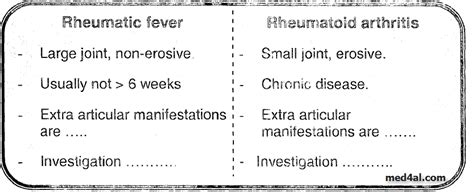Rheumatic fever and rheumatoid arthritis are often confused due to their similar names and some common symptoms. However, they are distinct conditions with different causes and treatments. Rheumatic fever is an inflammatory disease that can develop following a strep throat infection, affecting the heart, joints, brain, and skin. It is crucial to treat strep throat and related infections promptly to prevent rheumatic fever. Rheumatoid arthritis, on the other hand, is an autoimmune disease that leads to joint inflammation and damage. It’s part of a broader category of over 100 rheumatic disorders.
The symptoms of rheumatic fever and rheumatoid arthritis can overlap, including joint pain and discomfort. However, the specific nature and location of these pains can differ. Rheumatoid arthritis also has the unique characteristic of potentially causing fevers due to its effect on the immune system. This link between rheumatoid arthritis and fever is an important aspect for patients and doctors to consider.
Acute rheumatic fever (ARF) is a serious complication of group A streptococcal (GAS) pharyngitis, with around 470,000 new cases annually. It is more prevalent in developing countries, where GAS infections may be untreated or inadequately treated. Learning the symptoms, causes, and treatments of both conditions is vital, as they may share some common features but require different approaches for management.
For more detailed information, visit the following resources:
Rheumatoid Arthritis vs. Fever
Rheumatoid Arthritis vs Rheumatic Fever
Rheumatoid Arthritis Fever
Acute Rheumatic Fever – StatPearls
Rheumatic Fever – CDC
Rheumatoid Arthritis and Peripheral Neuropathy



